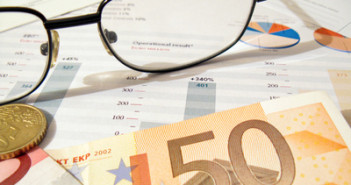The EUR/USD rally after the fiscal cliff agreement was short-lived, as the euro continues to lose ground against the dollar. The pair continues to show quite a bit of volatility. In fundamental news, Spanish and German employment figures looked very good. Spanish Unemployment Change was outstanding, posting a sharp drop of 59.1 thousand. This surprised the markets which had expected an increase of 50.3K. In Germany, the Unemployment Change indicator easily beat the estimate for the second straight month. In the US, the markets will be watching two key employment releases – Non Farm Employment Change and Unemployment Claims. The other highlight is the minutes from the FOMC’s most recent policy meeting.
EUR/USD Technical
- Asian session: Euro/dollar was again active, this time dropping to a low of 1.3124, before consolidating at 1.3147. The pair has edged higher in the European session.
- Current range: 1.3130 to 1.3180.
Further levels in both directions:Â 
- Below: 1.3130, 1.3110, 1.30, 1.2960, 1.2880, 1.28, 1.2750, 1.2690, 1.2624, 1.2590, 1.25 and 1.2440.
- Above: 1.3180, 1.3240, 1.3290, 1.3350, 1.34, 1.3480 and 1.36.
- 1.3130 is providing weak support as the pair has lost ground.
- 1.3180 is the next line on the upside, and could see further activity as the pair continues to fluctuate.
Euro/dollar loses ground as volatility continues – click on the graph to enlarge.
EUR/USD Fundamentals
- 8:00 Spanish Unemployment Change. Exp. 50.3K. Actual -59.1K.
- 8:55Â German Unemployment Change. Exp. 11K. Actual 3K.
- 9:00 Eurozone M3 Money Supply. Exp. +3.8%. Actual 3.8%.
- 9:00Â Eurozone Private Loans. Exp. -0.5%. Actual -0.8%.
- 10:00 French 10-y Bond Auction. Actual 2.07%.
- 12:30 US Challenger Job Cuts.
- 13:15 US ADP Non-Farm Employment Change. Exp. 134K.
- 13:30 US Unemployment Claims. Exp. 356K.
- 19:00 US FOMC Meeting Minutes.
- All Day:Â US Total Vehicle Sales. Exp. 15.3M.
For more events and lines, see the EUR/USD
EUR/USD Sentiment
- Euro volatility continues: EUR/USD has shown sharp movement since the fiscal cliff agreement was announced on Tuesday. The pair initially jumped higher, as it took advantage of broad dollar weakness. The euro touched 1.3299, and it looked like the greenback might continue to take a beating. However, the rally turned out to be very short-lived, and the euro has coughed up all of its gains and then some, as it struggles to find its footing in the mid-1.31 range.
- Congress approves fiscal cliff deal: With the US about to topple over the fiscal cliff, Congress pulled out all the stops and managed to cobble together a last minute agreement to avert the crisis. Both the Senate and House of Representatives passed the deal by large margins, although there was plenty of grumbling on both sides of the political divide. The agreement permanently extends tax cuts for all earners up to $450,000 and retains other tax breaks for individuals and businesses.
- Fiscal cliff averted, but more trouble ahead: Following the last-minute agreement on the fiscal cliff, the markets breathed a collective sigh of relief. However, the euphoria could be short-lived, as the deal fails to deal with two critical issues – the debt ceiling and spending cuts. The debt ceiling will be reached in February, and action will have to be taken to avoid a default on the country’s debt. Republicans are expected to demand cuts in programs such as Medicare and Social Security, while the Democrats vehemently oppose any reductions in these programs, and favor raising the debt ceiling, which is what Congress agreed to in 2011. The IMF has also weighed in, saying that the fiscal agreement is not enough, and that the US must take further action to deal with its long-term debt problem.
- US economy – up, down, or both?: As we start 2013, a look at recent key US releases points to a mixed and confusing picture. Employment numbers improved in December,  but consumer confidence fell badly. Housing figures were mixed as well, with New Home Sales down but Pending Home Sales up sharply. Although there are signs that the US economy is improving, this zigzagging makes it difficult to predict what to expect in early 2013.
- Euro strong, but Eurozone not: As we begin 2013, the euro may be looking good ,but the same cannot be said about the Eurozone economies. It was a tough year for the Eurozone, with the debt crisis and a near Grexit sending economic shock waves throughout the continent. The markets continue to worry about Greece and Spain, and Italy and France are struggling with high debts and low growth. Germany, the tradtional workhorse of Europe, is in better shape, but is suffering from slower growth and higher unemployment. On the bright side, there has been significant progress in the Greek debt crisis, as aid is again flowing to Athens. As well, a framework has been agreed upon concerning a greater supervisory role for the ECB, with the goal of minimizing the impact of future banking crises in the Eurozone. As for the euro, it’s unlikely that that the currency can sustain these levels against the dollar if the EZ economies continue to struggle and growth remains stagnant.



